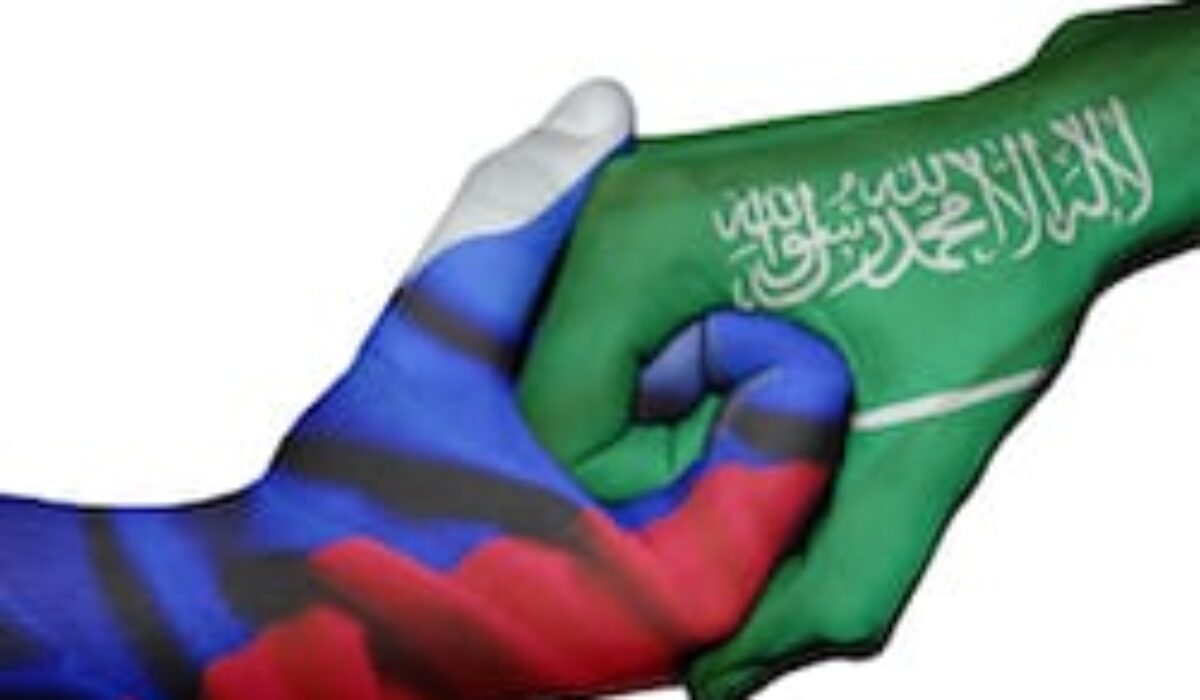Russia, Saudi Arabia and the $10 billion friendship
Aside from its economic significance, the recently-announced investment pact between Russia and Saudi Arabia could have far-reaching consequences for global alliances and relations.
The $10 billion deal seems to be a direct consequence of Russia’s shift in focus from West to East. The political implications could be just as significant as the economic ones.While it’s perhaps too soon to talk about a ‘special relationship’, the news that Saudi Arabia has given a solid commitment to invest up to $10 billion in Russia over the coming five years clearly signals a burgeoning rapprochement of sorts between the two states. The investment by Saudi Arabia’s Public Investment Fund (PIF), which is effectively the Arab state’s sovereign wealth investment fund, will be channelled through the state-operated Russia Direct Investment Fun (RDIF), and will be the single-biggest foreign direct investment in Russia in recent years.
In a statement announcing the deal, the RDIF confirmed: “We have reached final agreements and are announcing the creation of a partnership with the sovereign fund of Saudi Arabia, under which PIF will invest $10 billion into projects on Russian territory. These funds are expected to be implemented within 4-5 years”.
“According to RDIF, the pact is the first step towards building a significant, long-standing partnership between the two countries”
Things are already at a relatively advanced stage: up to five deals are on course to be approved before the end of September, while a further 10 projects are on course to be approved before the end of 2015. Seven of these latter deals have already been given preliminary approval. For the most part, however, the details have not yet been concluded, and it is possible that additional partners from China, South Korea and the UAE could become involved. Most of the $10 billion will be spent on agriculture projects, but there will also be investment in other areas, including healthcare, logistics, real estate and retail.

The groundwork for the agreement was laid out during the St Petersburg Economic Forum in June 2015, which was attended by Mohammed bin Salman al-Saud, deputy crown prince and Saudi Arabia’s defence minister. The RDIF has openly acknowledged the “immense role” that he played in negotiating and concluding the deal. He is known to have had several meetings with Vladimir Putin during the forum.
Alongside the deal with PIF, RDIF has also entered into a contractual agreement with the Saudi Arabian General Investment Authority (SAGIA), the state body responsible for overseeing Saudi Arabia’s investment affairs. The purpose of this agreement is to work together to identify mutually-beneficial investment opportunities throughout the Middle East (including within Saudi Arabia itself).
Both deals come at an opportune time for Russia as it’s facing mounting economic pressure, due both to falling oil prices and economic sanctions imposed by the West in response to its manoeuvres in the Crimean peninsula.
Some commentators have suggested that Russia’s courtship of Saudi Arabia was a direct response to Western sanctions. With Western funding withdrawn and a political stand-off showing no sign of abating, Russia has turned eastward in its search for alternatives. Up until a couple of years ago, Russia primarily solicited investment from American and European investment funds, but the focus now is on Asian and Middle Eastern funds.
Nonetheless, the deal came as a surprise to some Western observers given that relations between Riyadh and Moscow have long been strained on account of the Putin government’s support for the Assad regime in Syria. Recent reports, however, suggest that Moscow’s support for the Assad regime is wavering, and this may stem from Moscow’s need to develop closer economic relationships throughout the Middle East. Given that Saudi Arabia has traditionally been a close ally, partner and friend of the US, it may not consider overly close relations with Russia to be in its interest. If these obstacles can be overcome, however, the potential of relations between Saudi Arabia and Russia is truly massive.
In addition to strategic partnerships with India, Kuwait and Japan, Russia entered into a major economic deal with China in May of this year. Potentially worth in the region of $25 billion, the China-Russia deal will theoretically involve investment from Chinese banks into Russian companies. As with the Saudi arrangement, the Chinese deal was brokered by the RDIF.
That’s not to suggest, of course, that Russia is closed for business to Western investors. In fact, the RDIF has let it be known that Russia would welcome Westerners back with open arms. Whether or not the open invitation will be accepted anytime soon remains to be seen.


0 Comments